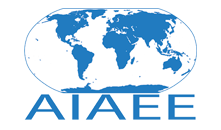Keywords
Sustainable Development, Capacity-Building, Program Evaluation, Participatory Training, Delivery, Extension Methods, Case Study Research
Abstract
The authors present an argument for reshaping rural extension based on their programming and research experiences in Africa and Asia. The book is composed of four major sections: (a) Extension confronts new opportunities and challenges, (b) The fundamentals of agricultural extension, (c) Learning for Sustainability (LforS) — A learning-oriented integrative extension approach, and (d) Developing and managing an integrative learning-oriented extension approach. In the first section, the authors highlight the need to take smallholder farmers into account when addressing Millennium Development goals. This section, further, provides recommendations for extension and advisory services working with smallholder farmers. They make the case for extension and advisory service to use integrative approaches when working with this population. The second section provides a short background on extension and advisory services and concludes that “the more successful… agricultural extension is in adapting its activities and methods to the prevailing economic, social and ecological environment, the greater will be its chances of success” (p. 13). The third section introduces their integrated model, Learning for Sustainability. This model has seven components: stakeholder dialogue, organizational development, knowledge management, awareness raising, capacity building, social mobilisation for implementation, and monitoring and evaluation. The authors use case studies to document how the model has been used. The fourth section focuses on key elements necessary for an extension or advisory service to be effective in addressing its clientele’s needs. The authors’ overall approach to this book was to provide key insights into reshaping rural extension, based on their collective experiences. The book is not a prescriptive formula for bringing about their recommended changes; rather it establishes parameters (approaches, methods, and tools) from which extension and advisory services may consider changes. The authors note that the approach they present is an “idealized example” (p. XI) of what could be.
Rights Statements
This Item is protected by copyright and/or related rights. You are free to use this Item in any way that is permitted by the copyright and related rights legislation that applies to your use. For other uses you need to obtain permission from the rights-holder(s).
Recommended Citation
Linder, J. R.,
&
Sandlin, M. R.
(2012).
Using Integrative Approach to Working with Small-Scale farmers.
Journal of International Agricultural and Extension Education, 19(1), 6-8.
DOI: https://doi.org/10.5191/jiaee.2012.19101



